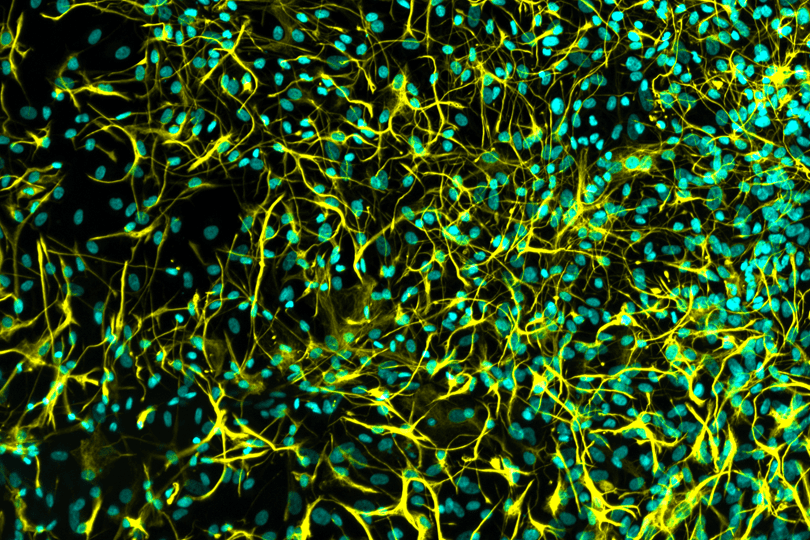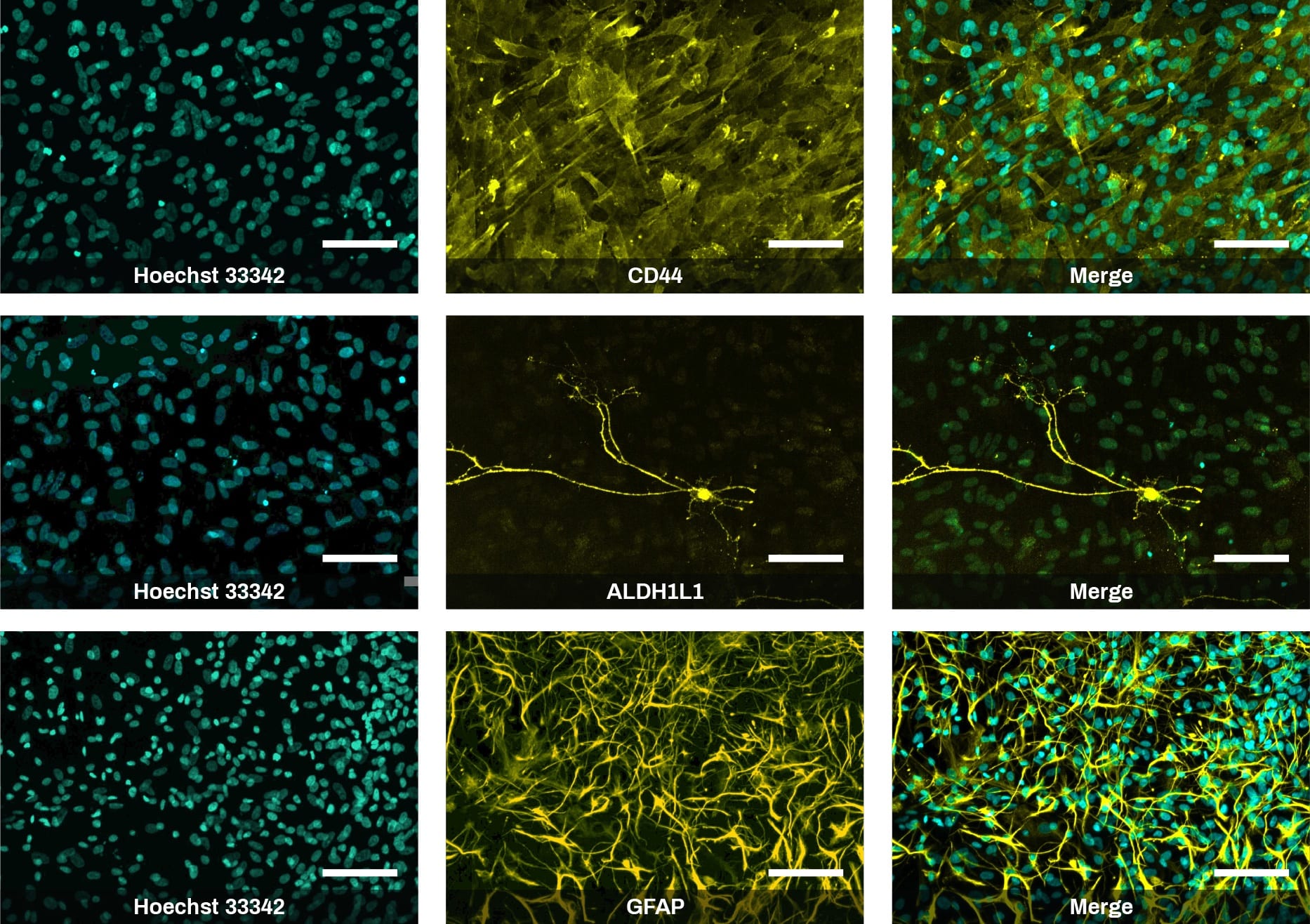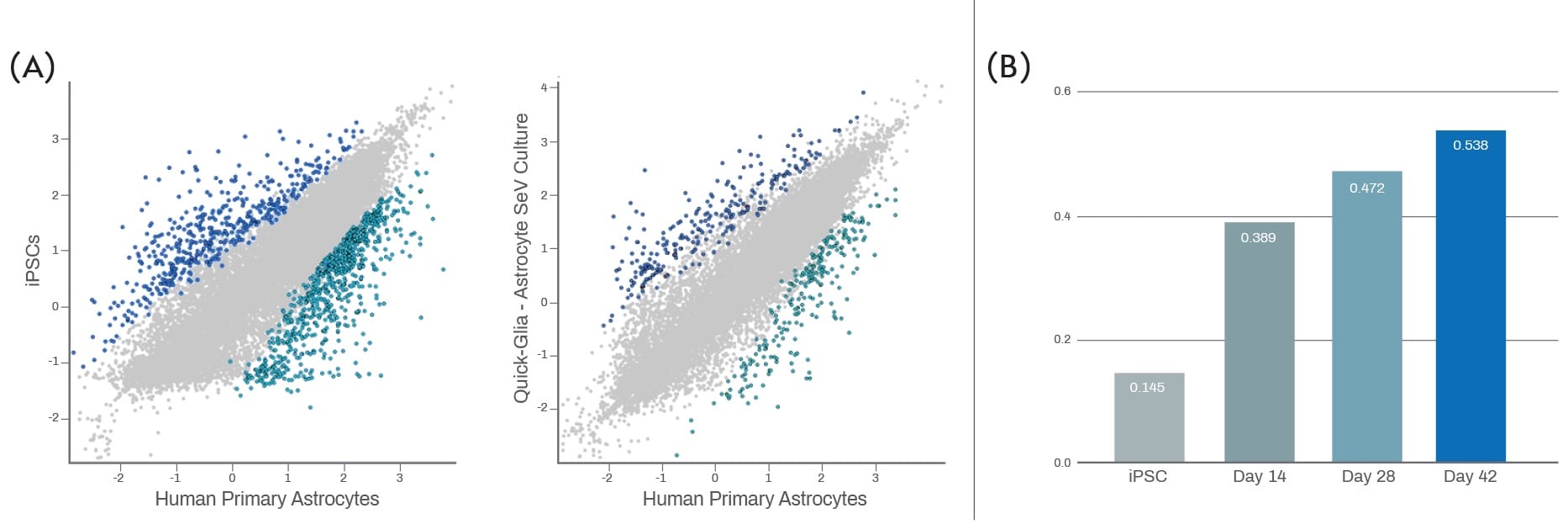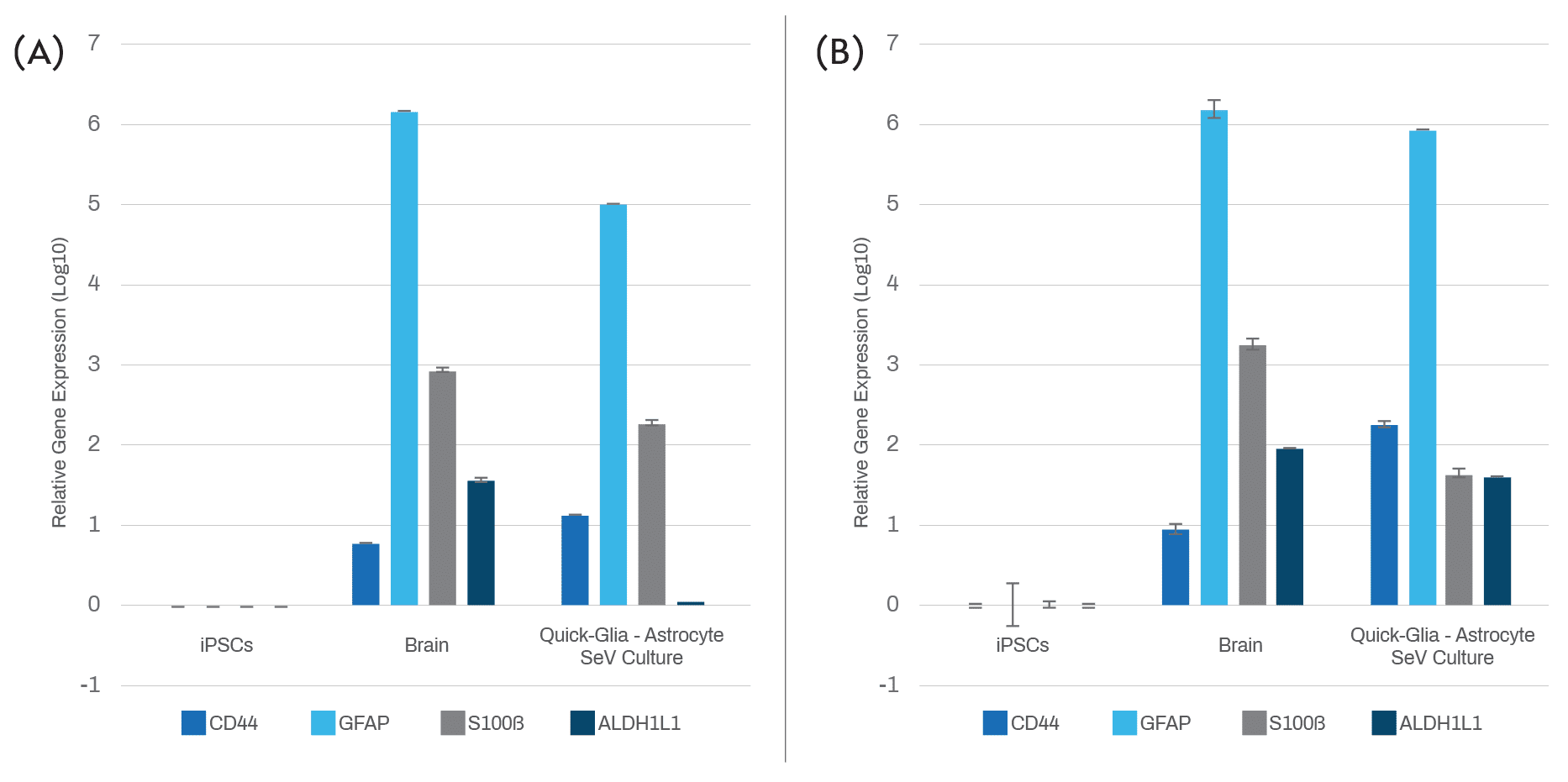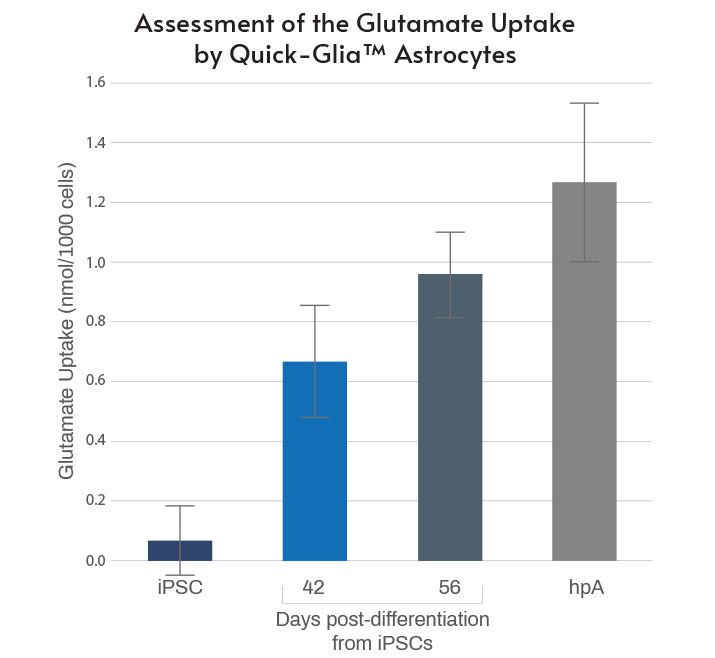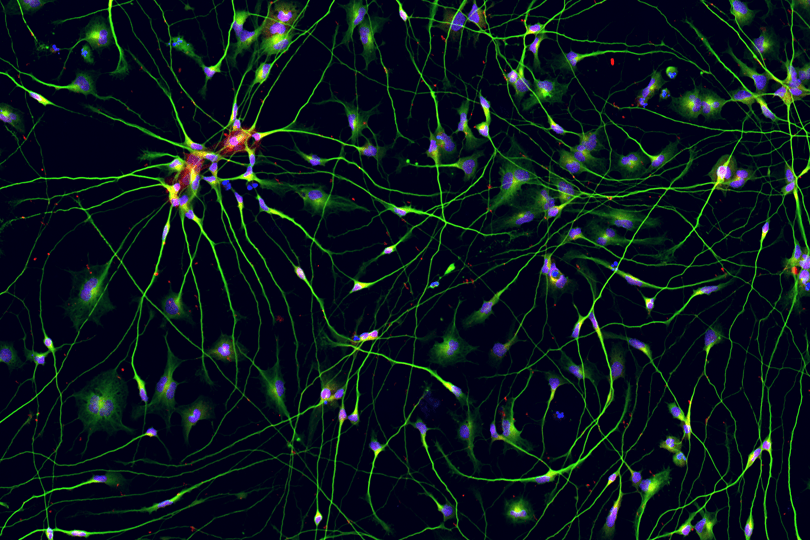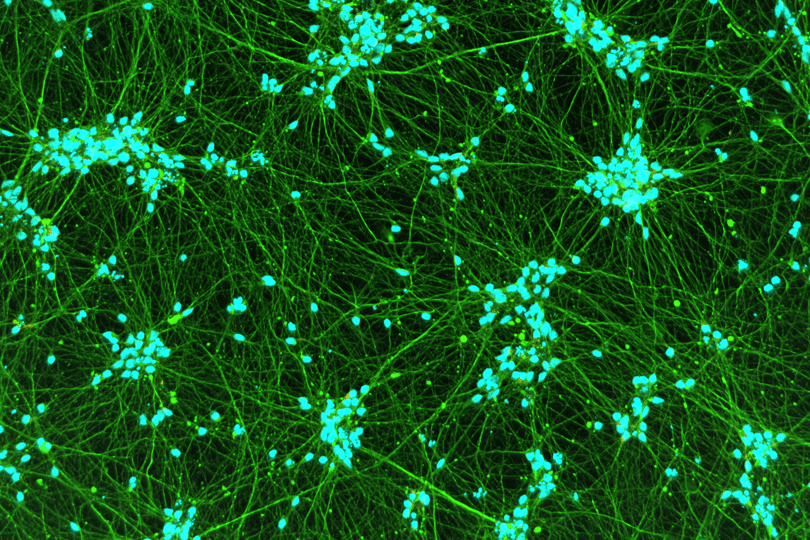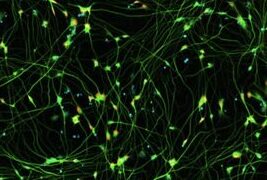Gain a deeper understanding of the complexities of glial signaling and tease apart variations due to age, gender, and donor variability with astrocytes derived from human iPS cells.
- Quick-Glia™ Astrocyte - Human iPSC-derived Astrocytes give you access to the same cells with every order for more biologically relevant and reproducible studies
- Quick-Glia™ Astrocyte Kits provide you with a quick and easy way to turn your iPS cells into astrocytes.

